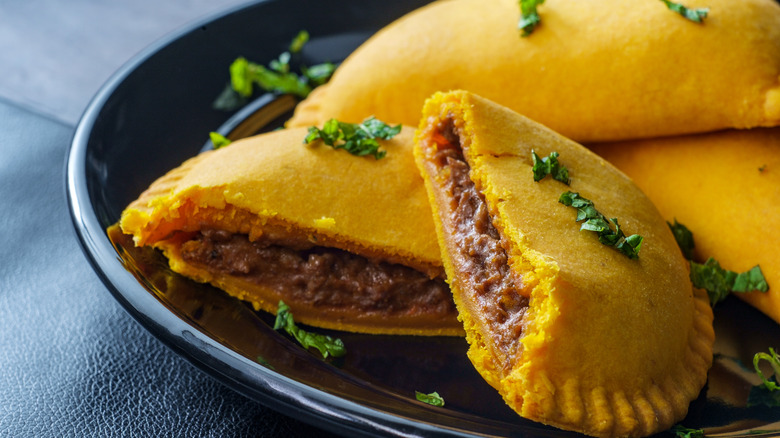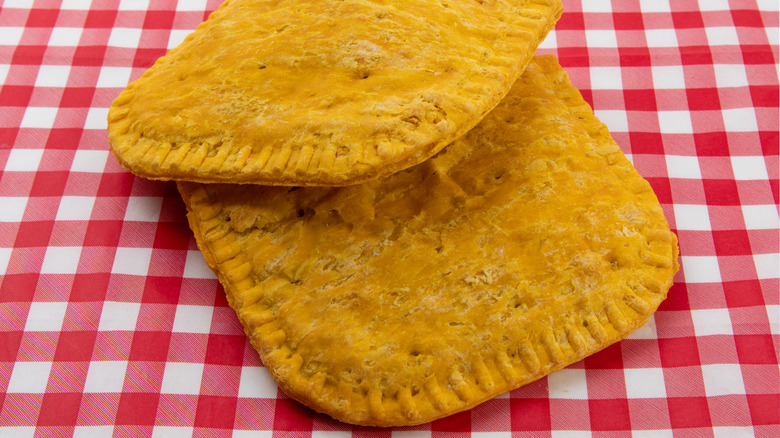What Makes Jamaican Beef Patties So Special?
If you think that Jamaican food begins and ends with jerk chicken, then you're missing out on a serious culinary delight — the Jamaican beef patty. Considered the Caribbean island nation's No. 1 fast food, it consists of rich, flaky pastry and a delectably spiced meat filling, sold for a cheap price. They're so good that it's not too hard to find them outside Jamaica. They're a big part of the Toronto food scene and common in other places like London where there's a sizable Jamaican population.
They're packed with flavor, thanks to the array of spices used in the filling. Chilis (usually spicy Scotch bonnets) give some kick, while ingredients like allspace give some sweetness. Onion, garlic, and paprika add more savory layers, and some recipes also add in thyme and curry powder for some extra dimension, giving this eclectic combination of flavors and the ground beef some serious pizzazz. However, Jamaican patties aren't just special because of their juicy and spicy filling; The rich pastry that encases these patties is also iconic. It's made flaky by rubbing fat into the flour — like a shortcrust pastry. (Avoid a common pie crust mistake and keep it cold so it stays flaky.) Many home recipes suggest butter, but you can also go for suet (beef fat) for more depth. The yellow shade of the pastry comes from the addition of turmeric, which gives them a bright color that makes them stand out even more.
Where they came from
Jamaican patties don't just stand out as a supremely tasty snack. Their history is also notable as a unique fusion of several food traditions. They're considered a descendent of the Cornish pasty, a savory British pastry with a similar casing, filled with beef, potato, and onion — but little spice. Colonizers brought the pasty to Jamaica around the 17th century. Over time, it got a level-up from other islanders. Jamaica's population included enslaved Africans, and from the 1800s onwards, indentured laborers from India and China as well. Elements of their cuisines likely found their way in. For example, the turmeric in the pastry is a common Indian ingredient. Patty ingredients like allspice and Scotch bonnet peppers were originally used by Indigenous people on the island, who developed recipes like jerk chicken with them, which they then passed on to enslaved people.
It's worth noting that Jamaican patties don't have to be made with beef, although it's the most popular filling. Chicken is fairly common (the meat will usually be shredded instead of ground), as are vegetable patties filled with a combination of carrots, peas, potato, and cabbage. The pastry stays the same, and the spices are typically pretty similar across different types of patties. There aren't many strict rules about what goes in a patty. Other versions include shrimp, cheese, or ackee, the Jamaican national fruit (but not in the U.S., where imports of the fruit are restricted due to the presence of the toxin Hypoglycin A).

